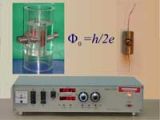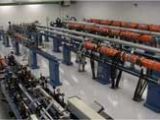|
|
|
Close Help | ||||||||||||||

It is a common workplace of the Institute of Inorganic Chemistry of the AS CR, the Institute of Physics of the AS CR, Faculty of Mathematics and Physics of the Charles University and the Faculty of Science of the Charles University. The research is aimed at the Mössbauer spectroscopy of the systems containing nanoparticles of iron compounds and alloys, at magnetic and transport properties of superconductors studied by highly sensitive custom-made magnetometers of the RF-SQUID type, and at cryogenic fluid dynamics, especially quantum turbulence in 4He superfluid. The long tradition in the research into weak superconductivity is documented by the picture of the first SQUID magnetometer developed in Central Europe in 1974 (during the information embargo) [M. Odehnal et al., Československý časopis pro fyziku A 24 (1974) 356, in Czech]. This device was able to detect magnetic fields connected with the heart and brain activities.

In the Joint Laboratory of the Institute of Physics of the AS CR and the Faculty of Mathematics and Physics of the Charles University a broad spectrum of materials with strongly correlated d- and f-electrons and superconductors is studied under combined extreme conditions – in the temperature range 0.35 K to 350 K, magnetic fields up to 14 T and hydrostatic pressure up to 2 GPa. Two fully equipped Physical Property Measuring Systems (PPMS9 and PPMS14) and one SQUID magnetometer with magnet up to 7 Tesla serve for this purpose. The main aim is to determine and explain correlations between electronic structure and physical properties of the studied compounds. This enables preparation of new materials with desired properties.

The Laser Plasma Research Centre PALS was established in collaboration with the Institute of Plasma Physics, AS CR in 1998. The Centre PALS operates one of the largest laser facilities in Europe, a kilojoule-class pulsed sub-nanosecond (terawatt) iodine photodissociation laser Prague Asterix Laser System (PALS), which was originally developed at MPQ in Garching, Germany. Innovative equipment reinstalled in a new laser hall in Prague is used to study the laser beam interaction with matter, especially for the generation of hot dense plasma. The Centre PALS offers its users also an optional experimental x-ray beam line driven by the record-brightness plasma–based zinc soft x-ray laser (wavelength 21.2 nm).
Copyright © 2008, Fyzikální ústav AV ČR, v. v. i.